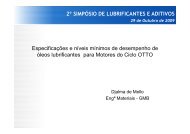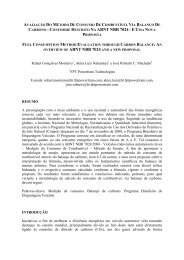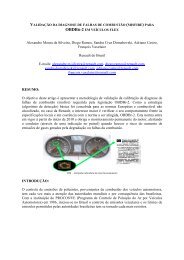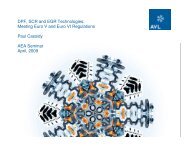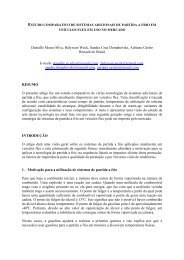Orlando Volpato, Delphi - AEA – Associação Brasileira de ...
Orlando Volpato, Delphi - AEA – Associação Brasileira de ...
Orlando Volpato, Delphi - AEA – Associação Brasileira de ...
You also want an ePaper? Increase the reach of your titles
YUMPU automatically turns print PDFs into web optimized ePapers that Google loves.
Diesel-Ethanol vehicles emit lower levels of toxics and ozone-forming hydrocarbons,<br />
mainly because ethanol emits 8.5 times less CO2 than diesel for the same amount of<br />
energy [24].<br />
In Brazil, there is a big <strong>de</strong>mand for diesel fuel. Looking at data taken form the 2008<br />
edition of the Mines and Energy Ministry’s National Energy Accounting (BEN 2008)<br />
[1] one can see from figures 1 and 2, that 41% of the petrol processed goes to diesel<br />
fuel production; 75% of diesel used goes to road transportation and 16% to<br />
agricultural use.<br />
Consi<strong>de</strong>ring the energy used for transportation, the vast majority goes to road<br />
transportation 91.8%, railroad transportation accounts for 4.8% of the used energy.<br />
Consi<strong>de</strong>ring road transportation alone, 51.6% of the energy comes from diesel fuel<br />
and about 19.4% comes from a renewable source (ethanol).<br />
The strong <strong>de</strong>pen<strong>de</strong>nce on diesel fuel leads to some interesting import/export<br />
characteristics. Table 1, below, summarizes the import/export volumes and values for<br />
2008.<br />
It is said that Brazil is self-sufficient in petrol. Most of Brazilian’s petrol is of heavy<br />
type, not suited for diesel production, in or<strong>de</strong>r to attend the <strong>de</strong>mand for diesel fuel<br />
light petrol and diesel fuel is imported. We have excess heavy petrol and gasoline,<br />
which are exported.<br />
Consi<strong>de</strong>ring the energy equivalence, in a quick calculation, the volume of petrol and<br />
fuels that are imported/exported the net result is near zero, indicating a self-sufficient<br />
condition. See table 1.<br />
Page 2 of 18<br />
Fig. 1: Petrol <strong>de</strong>rived fuels usage in Brazil


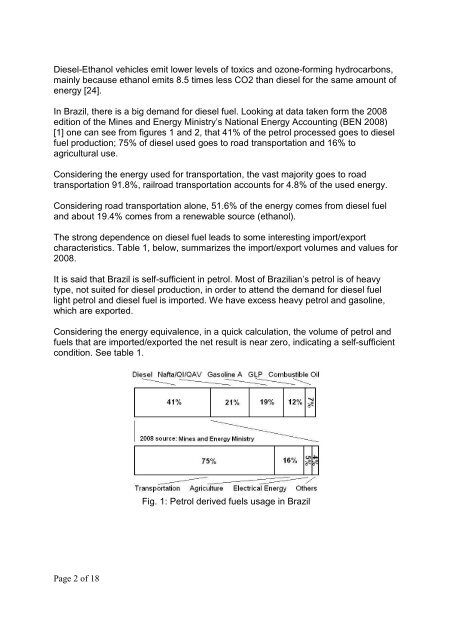

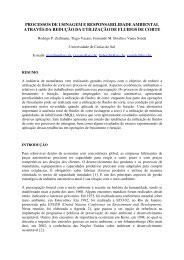
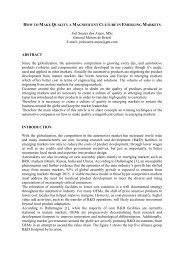




![Charles Correa Conconi, Mercedes-Benz [Modo de Compatibilidade]](https://img.yumpu.com/36264008/1/190x135/charles-correa-conconi-mercedes-benz-modo-de-compatibilidade.jpg?quality=85)
